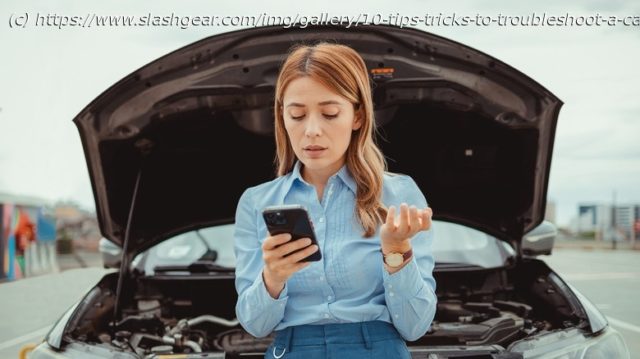It can be pretty distressing when your car isn’t starting up like it should. Here are a handful of tips and tricks you can try before having it towed to a shop.
Picture this — you’re set to go out, and you try to start your car, but all you hear is a clicking noise. Even worse, nothing happens. Such a situation leaves you with two options. The first is waiting for a mechanic or towing service. The second is fixing it yourself. However, the sheer number of moving parts in your car means it’s not as easy as switching out a light bulb. There’s a high chance you can troubleshoot your vehicle and get it working again without a trip to the mechanic.
When your car doesn’t start, it’s usually due to a problem with one of the parts that gets to work when you trigger the ignition. This should come as no surprise because, as with wear and tear, something is bound to malfunction. This can be anything from your car’s battery to its fuel pump, and for the most part, it’s probably pretty easy to identify and fix yourself. Here are some common troubleshooting tips to try when your car won’t start.Jump start your car
Your car’s battery powers the electrical units and starts the engine. Of course, like any other part, your car’s battery won’t last forever. Eventually, batteries weaken and won’t hold enough charge to start the engine. More commonly, a drained battery is most likely the culprit.
Typically, your car battery charges whenever the engine is turned on. However, if you haven’t used your car in a month or two, when you try to start the engine, it might not work because the battery has drained during this period. Another common cause is if you leave an electrical unit, like headlights, on for too long while the engine is off. It’ll drain all the power from the car’s battery, and your car won’t start. Luckily, recharging your battery won’t cost much. You can fix this by jump starting your car by using another car’s battery as a source for an initial electrical charge and letting the engine recharge your battery.
To jump start your car, you’ll need some jumper cables connecting your engine to another power source. They are usually labeled with a + and – sign or color coded so you know where to place the cables on your battery. Clip it onto the battery terminal and onto that of the battery you’re using to jump start the car. Once you’re done, start the engine again, and you should hear your vehicle’s sweet purr or roar. After your car starts, leave the engine running for a bit so the battery can charge.Clean corroded battery terminals
Sometimes, your car’s battery is in good condition, but if you take a closer look at the terminal connecting it to the rest of the car, you’ll notice a whitish or greenish and possibly even bluish powdery substance surrounding it. This is evidence of corrosion, which is caused by overheating and leaking fluids and is more common with older batteries.
While the battery terminal may seem minor, it distributes power from the car battery to the rest of the vehicle, so a corroded terminal will interrupt your vehicle’s electrical system. With enough time it can even prevent your car from starting.
So, if you notice corrosion on your battery terminal, you can clean it yourself with some household items. First, mix a spoonful of baking soda with water. You’ll use this mixture to clean the affected area. Disconnect both terminals, then use a brush dipped in your solution to scrape away the corrosion gently. When you’re done cleaning the terminal, apply some grease, and then reconnect the terminals. However, where the corrosion is persistent and the damage increases, despite regular maintenance, you may need to replace the terminals completely. In this case, it is advisable to get expert help.Jiggle the steering wheel
Sometimes, the problem may be that your key won’t even turn when you place it in the ignition. Despite what you may think, this is a common problem and, thankfully, one that comes with an easy fix. First, it is important to learn why the key refuses to turn. Understanding it will help you solve the issue and potentially prevent it from happening again.
Essentially, an ignition key initiates the flow of current to the starter motor, which starts the engine.






